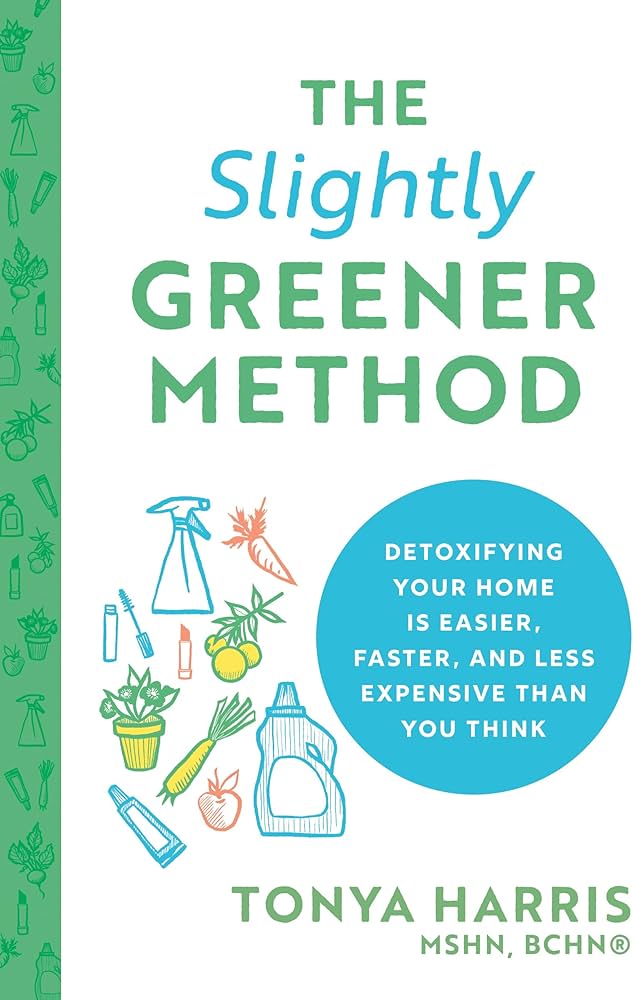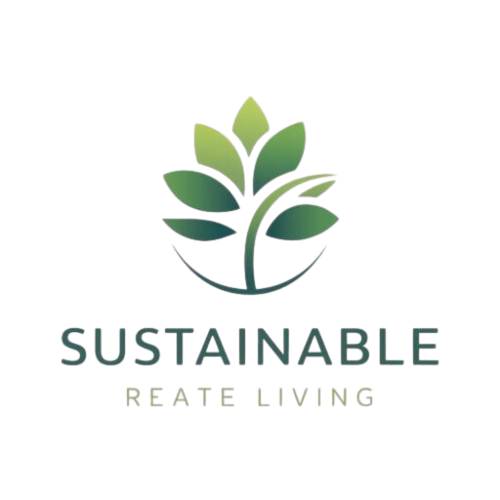Eco-friendly homes often spark curiosity. Many wonder if these green options cost more than traditional homes.
The rise in eco-friendly living has become a hot topic. More people are looking for ways to reduce their carbon footprint and live sustainably. As interest grows, so does the question of cost. Do eco-friendly homes carry a premium price tag?
Some believe investing in energy-efficient materials and renewable energy sources leads to higher costs. Others argue that the long-term savings on utilities can offset these initial expenses. Understanding the financial aspects of eco-friendly homes is crucial for buyers. This blog will explore the costs and benefits of eco-friendly living, helping you decide if it’s worth the investment.
The Eco-friendly Home Trend
Eco-friendly homes are gaining popularity. More people want homes that are kind to the planet. The trend is not just a passing phase. It reflects a deep change in how we think about living. Many factors are driving this shift. Let’s explore two key aspects of this eco-friendly movement.
Rise In Environmental Awareness
People are more aware of environmental issues. Climate change and pollution are serious problems. Many want to make a difference. They see eco-friendly homes as a solution. These homes use less energy and water. They often use sustainable materials. Homeowners feel good knowing they help the environment.
Young people lead this change. They care deeply about the planet. Their choices reflect a desire for sustainability. They prefer green features like solar panels and energy-efficient appliances. This awareness influences home design and construction.
Shift Towards Sustainable Living
Living sustainably is now a priority for many. People want to reduce their carbon footprint. Eco-friendly homes offer a way to do this. Many features help save energy and resources.
Homeowners embrace practices like recycling and composting. They choose renewable energy sources. This shift is evident in new home designs. Builders focus on green technologies. This trend is not just about saving money. It’s about creating a better future.
More communities support sustainable living. Many cities promote green building practices. This movement encourages everyone to consider eco-friendly options. The desire for a sustainable lifestyle is growing.
Initial Costs Vs. Long-term Savings
Eco-friendly homes may have higher initial costs. However, they often lead to long-term savings on energy bills. Choosing sustainable options can benefit both the environment and your wallet over time.
The debate over whether eco-friendly homes are more expensive often centers on the initial costs versus long-term savings. Many people wonder if the higher upfront investment in green technologies truly pays off down the line. Understanding these financial dynamics can help you make informed choices for your next home.
Upfront Investment In Green Technology
Choosing to build or buy an eco-friendly home often requires a significant upfront investment. Solar panels, energy-efficient appliances, and sustainable building materials can drive up the initial costs. Investing in these technologies might feel daunting, but consider the long-term benefits. Many eco-friendly features not only enhance your home’s value but also lead to lower maintenance costs over time. You might find that some local governments offer tax incentives for installing energy-efficient systems. This can help offset the initial price tag, making it more manageable.
Energy Efficiency And Reduced Utility Bills
Energy-efficient homes typically result in lower utility bills, a compelling reason to consider the investment. Imagine paying significantly less for heating, cooling, and electricity each month. For instance, a family who switches to energy-efficient windows can save hundreds of dollars annually. These savings add up, often leading to a return on investment in just a few years. Think about your own energy consumption. Are you constantly shocked by your monthly bills? By investing in eco-friendly technologies, you can achieve a more predictable and manageable budget. In the long run, the financial benefits of an eco-friendly home often outweigh the initial costs. Wouldn’t you prefer a home that saves you money while being kind to the planet?
The True Price Of Eco-friendly Materials
Building eco-friendly homes can seem costly. Many think eco-friendly materials are too expensive. This belief can make people hesitate. Understanding the true cost helps clear the confusion. It’s not just about the price tag today. It’s also about the long-term benefits.
Sourcing Sustainable Resources
Sourcing sustainable materials often costs more upfront. These materials come from responsible suppliers. They use methods that protect the environment. Local sourcing can save money and reduce transport emissions. Builders can find local wood, stone, or recycled materials. These choices support the economy and cut costs.
Eco-friendly materials may have a higher initial cost. This is due to quality and sourcing practices. However, they often last longer. This means less frequent replacements. Homeowners save money over time. Choosing sustainable materials can lead to lower utility bills too.
Lifecycle Analysis Of Building Materials
Lifecycle analysis examines the full impact of building materials. This includes production, use, and disposal stages. Eco-friendly materials often have lower environmental impacts. They may use less energy to produce and recycle.
Many eco-friendly options are designed to last. They resist damage from weather and pests. This durability reduces the need for repairs. Homeowners can enjoy peace of mind. Understanding lifecycle costs helps in decision-making. The upfront cost may be higher, but savings accumulate over time.
Government Incentives And Support
Government incentives and support can help lower the costs of eco-friendly homes. Programs may offer tax breaks, grants, or low-interest loans. These benefits make green living more affordable and encourage sustainable building practices.
Government support plays a crucial role in making eco-friendly homes more accessible. Various incentives can help offset the initial investment, making sustainable living a more feasible option for many. Understanding these programs can empower you to make informed decisions about your green home.
Tax Credits And Rebates
Many governments offer tax credits specifically for energy-efficient upgrades. These credits can significantly lower your tax bill, making eco-friendly choices more appealing. For instance, in the U.S., you might qualify for a federal tax credit for solar panel installation. This credit can cover a significant portion of your installation costs, sometimes up to 26%. Rebates are another way to save money. Local utility companies often provide rebates for energy-efficient appliances or home improvements. This not only reduces your upfront costs but also encourages you to invest in sustainable options.
Grants For Green Building
Grants can provide financial support that doesn’t require repayment. Various organizations and government bodies offer grants for green building projects. For example, the U.S. Department of Energy has programs aimed at supporting energy-efficient home renovations. These grants can fund projects like insulation upgrades or HVAC system improvements. Additionally, some states have their own grant programs. Researching your local options can uncover valuable financial resources. Are you ready to explore these opportunities? They might just make your eco-friendly dream home a reality.
Mythbusting: The Expense Of Green Homes
Many people believe that eco-friendly homes come with a hefty price tag. This perception often leads to the assumption that choosing green options means sacrificing affordability. Let’s dive into the realities of green home costs and bust some myths surrounding them.
Comparing Traditional And Green Building Costs
When you look at the costs of traditional homes versus green homes, the differences can be surprising. Initially, green homes may appear more expensive due to the materials and technologies involved. However, consider this: green homes often lead to significant savings over time.
- Lower utility bills due to energy-efficient appliances
- Reduced maintenance costs from durable, sustainable materials
- Potential tax incentives and rebates for eco-friendly upgrades
Many homeowners report saving hundreds to thousands of dollars each year. Think about it—wouldn’t you prefer investing a little more upfront if it means saving in the long run?
The Misconception Of Unaffordability
The myth that green homes are unaffordable can deter many from considering them. In reality, the cost of building green has been decreasing as technology advances and more builders specialize in eco-friendly construction. You might even find that some green solutions cost the same as traditional options.
For instance, my neighbor recently built an eco-friendly home and was pleasantly surprised. The solar panels, which initially seemed like a luxury, ended up paying for themselves through energy savings and state incentives.
Have you ever thought about how much you could save if you switched to green energy sources? The upfront costs might seem daunting, but the long-term benefits could change your financial picture significantly.
Ultimately, the choice between traditional and green homes isn’t just about initial costs. It’s about understanding the overall value they bring to your life and the environment.

The Resale Value Of Eco-friendly Homes
Eco-friendly homes often have higher resale values. Buyers are increasingly interested in energy efficiency and sustainability. Investing in green features can make a home more appealing and valuable in the long run.
The resale value of eco-friendly homes is a hot topic for both buyers and sellers in today’s real estate market. Many potential homeowners are curious about how green features impact resale value. You want to know if investing in a sustainable home will pay off down the line. Let’s dig into the factors that influence the resale value of these properties.
Market Demand For Sustainable Properties
The demand for eco-friendly homes is on the rise. More buyers are looking for properties that reflect their commitment to sustainability. Studies show that homes with energy-efficient features sell faster and at a premium. In a recent survey, 78% of homebuyers stated they would pay more for a home with solar panels. This trend reflects a growing awareness of environmental issues and a desire for lower utility bills. Are you ready to take advantage of this market shift?
Appreciation Rates Of Green Homes
Eco-friendly homes often appreciate at a higher rate than traditional homes. Research indicates that green homes can see appreciation rates of 10% or more over a decade. Consider a friend who purchased a LEED-certified home five years ago. She recently sold it for 15% above her original purchase price. This is not a coincidence; energy-efficient features can significantly boost property value. You can expect a higher return on your investment when you choose sustainable upgrades. Are you considering these upgrades to improve your home’s value? Understanding these trends can help you make informed decisions about your property.
Operational Costs In The Spotlight
Understanding the operational costs of eco-friendly homes helps you weigh the benefits against potential expenses. While the initial investment may seem high, ongoing costs could tell a different story. Are you curious about how daily energy consumption and maintenance impact your long-term savings?
Daily Energy Consumption
Eco-friendly homes are designed to be energy-efficient, which can lead to significant savings on utility bills. With features like solar panels, energy-efficient appliances, and superior insulation, these homes often consume less energy than traditional ones.
Consider this: a household that switches to LED lighting and Energy Star-rated appliances can see a reduction in monthly electricity costs by up to 30%. Imagine what that could mean for your budget over the course of a year.
Have you ever thought about the long-term impact of energy consumption on your wallet? Investing in energy-efficient technologies today can reduce your costs tomorrow, allowing you to allocate funds to other areas of your life.
Maintenance And Durability
Eco-friendly materials often boast enhanced durability, reducing the need for frequent repairs or replacements. This means fewer unexpected costs and less time spent on maintenance tasks.
For instance, homes built with sustainable materials like bamboo or reclaimed wood can withstand wear and tear better than conventional materials. This durability translates to lower maintenance costs over time.
Are you ready to experience the peace of mind that comes with less upkeep? By choosing eco-friendly options, you can not only enhance your living space but also create a more manageable and cost-effective home environment.
Case Studies: Cost Analysis Of Eco-friendly Homes
The debate over whether eco-friendly homes come with a higher price tag often hinges on real-life examples and practical insights. Analyzing cost through case studies can shed light on the financial implications of choosing green living. Let’s look at some compelling instances that reveal the economic dynamics of eco-friendly homes.
Real-life Examples Of Green Home Economics
Consider a family in California who invested in a solar panel system for their home. The initial cost was significant, around $20,000. However, they now save about $300 monthly on energy bills, leading to a payback period of just over five years.
Another case involves a couple in Oregon who built their home using sustainable materials. They spent approximately 15% more than a conventional home. Yet, the increased energy efficiency has resulted in yearly savings of around $1,200 on utilities.
These examples illustrate that while upfront costs may be higher, the long-term savings can balance the scales. Have you ever considered how much you could save over time with an eco-friendly investment?
Success Stories And Lessons Learned
Many homeowners have reported positive experiences after choosing green options. One family in Florida installed energy-efficient appliances and smart home technology. Their utility bills dropped by 40%, showcasing the potential of smart investments.
Lessons learned from these experiences often center on the importance of thorough research. Homeowners who took the time to compare costs and understand available incentives found themselves in better financial situations.
Did you know that many local governments offer tax breaks for eco-friendly renovations? Taking advantage of these can significantly reduce initial costs. What steps can you take today to explore similar opportunities in your area?
Making Green Homes Accessible
Eco-friendly homes should not just be for the wealthy. Everyone deserves a chance to live in a sustainable space. Many people worry that green homes are too expensive. Yet, there are ways to make these homes more affordable. Innovations and community efforts play a big role in this change.
Innovations In Affordable Sustainable Housing
New building techniques are making green homes cheaper. For example, modular homes use less material and energy. These homes can be built quickly and efficiently.
Another option is using recycled materials. Builders can create strong homes from old items. This approach cuts costs and helps the planet.
Smart home technology also helps save money. Energy-efficient appliances lower utility bills. This makes living in a green home more affordable over time.
Community Initiatives And Collaborations
Local governments are stepping up to promote eco-friendly housing. They offer incentives for builders who create green homes. These programs make it easier for everyone to access sustainable options.
Non-profit organizations are working to build affordable eco-housing. They team up with communities to create supportive living spaces. These homes are designed to fit various budgets.
Community gardens and shared spaces also enhance green living. They bring people together and promote sustainability. Such initiatives make eco-friendly living accessible for all.

Future Outlook On Eco-friendly Housing
The future outlook on eco-friendly housing is brighter than ever. As awareness about climate change grows, more people are considering sustainable living options. You might be wondering how this shift impacts the cost of eco-friendly homes.
Trends In Green Construction
Green construction is evolving rapidly. More builders are adopting sustainable practices, which is driving innovation in materials and techniques. You’ll find homes made from recycled materials, energy-efficient appliances, and solar panels becoming the norm.
- Modular homes: These are often cheaper to build and reduce waste.
- Smart technology: Integrating smart systems can lower energy costs.
- Local sourcing: Using local materials cuts down on transportation costs.
Each trend contributes to a more sustainable housing market. As these practices become standard, you can expect the costs of eco-friendly homes to stabilize. This shift may make them more accessible to average homebuyers.
Predictions For Cost Efficiency
Experts predict that eco-friendly homes will become more cost-efficient over time. As technology advances, the initial investment in green building materials may decrease. You might find that energy savings and lower utility bills offset higher upfront costs.
Consider the long-term benefits. Many eco-friendly homes come with tax incentives and rebates, making them financially attractive. Additionally, homes with energy-efficient features often have higher resale values.
What if you could save money while also benefiting the environment? Investing in eco-friendly housing could be a smart choice for your future. The shift towards sustainability is not just a trend; it’s a movement that’s here to stay.

Frequently Asked Questions
Is It More Expensive To Build An Eco-friendly House?
Building an eco-friendly house can be more expensive upfront due to sustainable materials and technologies. However, long-term savings on energy bills and maintenance can offset these costs. Many homeowners find that eco-friendly homes increase in value over time, making them a wise investment.
What Is The Disadvantage Of Eco Homes?
Eco homes may have higher upfront costs due to sustainable materials and technologies. Limited availability of specific designs can restrict choices. Maintenance can be challenging with certain eco-friendly materials. Some eco homes might not offer the same energy efficiency in extreme climates.
Why Is Eco-friendly More Expensive?
Eco-friendly products often cost more due to higher production costs, sustainable materials, and ethical labor practices. Limited supply and demand for these items can also drive prices up. Investing in eco-friendly options supports environmental protection and promotes sustainable practices for the future.
How Much More Expensive Is Sustainable Construction?
Sustainable construction can be 5% to 20% more expensive than traditional building methods. Higher upfront costs often stem from eco-friendly materials and technologies. Long-term savings on energy and maintenance can offset initial expenses, making it a worthwhile investment for many projects.
Conclusion
Eco-friendly homes can be more expensive upfront. Yet, they offer long-term savings. Lower energy bills and less maintenance help offset initial costs. Many buyers value sustainability. They see it as an investment in the future. Homeowners also gain health benefits from better air quality.
Choosing eco-friendly options is a smart decision. It helps the planet and your wallet. Consider the overall benefits before making a choice. Sustainable living can lead to a happier, healthier life.
